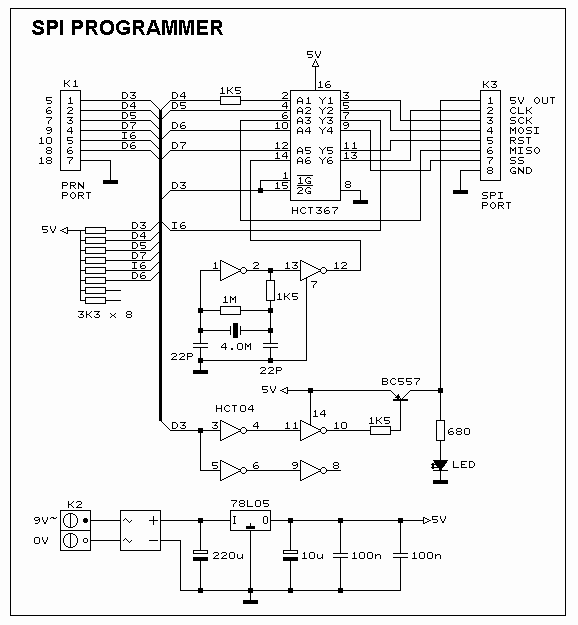In order to obtain a low voltage indication - useful if you would like to stop using a battery before it is drained too deeply - the output from pin 6 is still directed through an LED (and current limiting resitor), but this time it is connected to ground rather than to the input voltage Vin as shown in the amended circuit diagram above.
Note that this circuit will only operate with input voltages in excess of around 3.8 Volts and so it cannot be used with a 2 AA battery charger.
The circuit diagram shown above is configured to give a high voltage indication. The 100KOhm variable resistor is used to manually configure the voltage over and above which the LED will light. If the voltage arriving at pin 2 of the LM741 is greater than the voltage arriving at pin 3, the LED lights thanks to the output from pin 6. At all other times the LED is off (as is the output from pin 6).
The Zener diode should be chosen with a zener voltage of around half that of the target voltage - e.g. for a 12.0 Volt indicator, a 5.6 Volt Zener diode could be used.
The LM741 specification sheet can be downloaded here.
The LM741 specification sheet can be downloaded here.
















